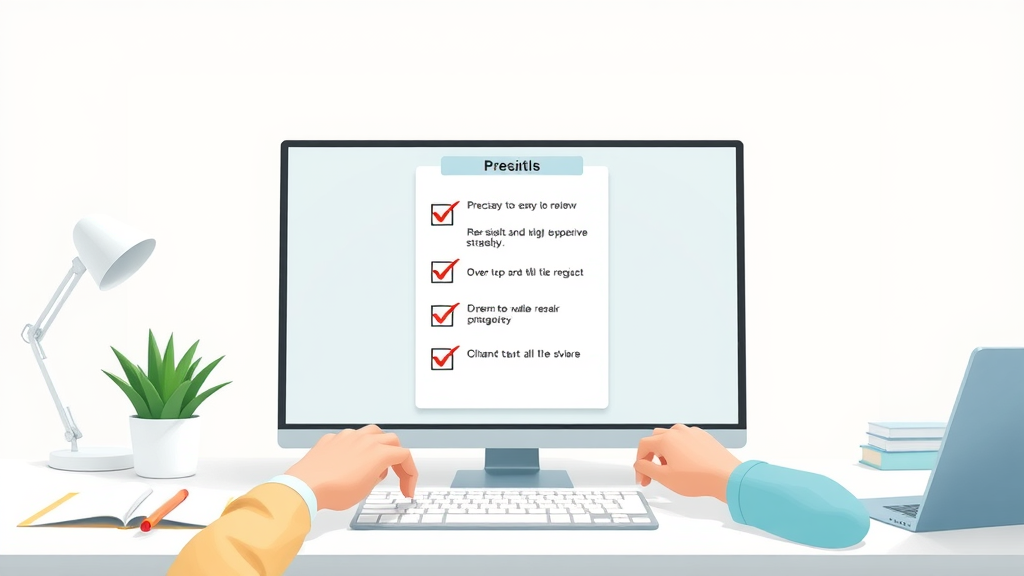Did you know that 89% of consumers read businesses’ responses to online reviews? In today’s digital world, your reply—whether to a negative review, a glowing 5-star rating, or neutral feedback—can make or break your brand’s reputation. Review response strategies aren’t just about damage control. They’re a powerful tool to demonstrate authenticity, show customer appreciation, and influence new customers before they even walk through your doors. Let’s explore how fast, thoughtful responses turn ordinary exchanges into lasting customer loyalty.
Unlocking Success with Review Response Strategies: Why Fast, Thoughtful Responses Matter
In the fast-moving world of google reviews , review responses are no longer optional—they’re critical for online reputation management. Responding quickly to every online review demonstrates professionalism to potential customers and existing clients alike. Whether you’re addressing a negative review or celebrating positive feedback, a timely response helps build trust and reassures users that their voice matters. Real-world studies show that businesses replying within 24-48 hours see higher engagement rates and improved customer retention.
Thoughtful review response strategies go beyond a generic thank-you. They show you’re truly hearing your customers—acknowledging their concerns, celebrating their praise, and inviting them back. For future customers, this transparency signals reliability and commitment, two vital factors in the decision-making process. In a market where a single google review can sway public opinion, taking the time to reply promptly can set your brand apart.

- Discover how 89% of consumers read businesses’ responses to reviews—your reply could be the difference between gaining or losing a loyal customer.
What You'll Gain from Mastering Review Response Strategies
Diving into review response strategies means you’re not just reacting—you’re proactively shaping perceptions and building trust . Understanding the psychology behind review responses empowers your team members to tackle both positive and negative feedback with confidence and consistency. Knowing how to respond effectively builds stronger customer relationships and establishes your business as attentive and accountable.
In this article, you’ll gain actionable insights for responding to reviews , practical templates for every scenario, and proven tactics to amplify your online reputation . From turning negative reviews into learning opportunities to spotlighting delighted customers, you’ll come away with a toolkit ready to convert every review into a moment of brand growth.
- Understand the psychology behind review response strategies, learn actionable methods to respond to negative reviews and positive feedback, and discover tactics for maintaining a strong online reputation
The Impact of Review Response Strategies on Online Reputation
Your online reputation is built one review response at a time. Customers—and search engines—value consistency, empathy, and engagement in how you handle feedback. Responding to reviews signals that your business is active, transparent, and genuinely values its clientele. As advertising trust declines, potential customers increasingly rely on real-life review narratives and your public handling of them when choosing whom to trust with their money.
By leveraging proactive review response strategies , you not only manage risk from potential reputation crises but actually attract more google reviews and drive word-of-mouth referrals. Businesses with robust response processes report higher ratings over time, as satisfied customers see their positive experiences acknowledged and unhappy ones see their issues addressed. This cycle steadily builds a fortress of customer loyalty around your brand.
Review Response Strategies and Online Reputation: Building Trust with Potential Customers
Effective review responses are pivotal in attracting potential customers . When a future customer sees your business address both positive and negative feedback—thanking, apologizing, and following up—they gain confidence in your reliability. Thoughtful responses enhance reputation management , turning each exchange into a public demonstration of your values and commitment to improvement.
By directly referencing details from each review and avoiding generic replies, businesses create a pattern of authentic engagement. This strategy not only appeals to search algorithms but also makes your brand memorable to those browsing google reviews or other platforms for the best service providers in your field.
- Leverage effective review responses to enhance online reputation management and attract potential customers

"A single well-crafted response can boost customer satisfaction and trust more than a dozen unaddressed reviews."
Responding to Negative Reviews: Turning Criticism into Opportunities
A negative review might sting, but it’s also a golden opportunity to showcase your company’s commitment to improvement. When customers see that you handle criticism with professionalism and empathy, their trust in your business grows. Responding to negative reviews promptly lets the customer—and the wider public—know you’re committed to making things right.
Smart review response strategies for negative feedback involve more than apologizing. They require transparency, a willingness to address the issue directly, and outlining clear steps for resolution. By transforming criticism into dialogue, you turn a negative into a loyalty-building moment—and often inspire updated, more positive feedback from the original reviewer.
Crafting Effective Review Responses for a Negative Review
The approach for a negative review should always begin with acknowledging the customer’s feelings and thanking them for their honesty. Next, provide a clear apology, and then explain what steps you’ll take to investigate or resolve the concern. Avoid defensiveness and, where appropriate, invite the reviewer to continue the conversation privately—showcasing your genuine care for their experience.
Following these steps not only calms the specific situation but also reassures potential customers browsing your google business profile that you won’t ignore problems. Responsiveness builds trust and differentiates you from competitors who shy away from addressing criticism transparently.
- Steps for addressing negative reviews transparently and professionally

Top Review Response Strategies for Responding to Negative Feedback
To respond effectively to negative reviews , start with a genuine apology and acknowledgment of their dissatisfaction. Then, address specific concerns raised in the review, demonstrating that you read and understand their experience. Conclude with clear next steps or an invitation to discuss the issue offline, showing your ongoing commitment to resolving the matter.
Well-crafted responses make customers feel seen and welcomed back, rather than dismissed. These strategies can improve customer retention and turn disappointed patrons into advocates for your business.
- How to apologize correctly, address concerns, and outline follow-up actions in your review responses
| Type | Effective Response | Ineffective Response |
|---|---|---|
| Negative Review | “Thank you for your feedback. We’re sorry to hear about your experience and are looking into what happened. Please contact us directly so we can resolve this to your satisfaction.” | “We disagree with your comments. We’ve never had this problem before.” |
Responding to Positive Reviews: Reinforcing Customer Loyalty
Don’t underestimate the power of a genuine response to positive reviews . Thanking customers and referencing details from their feedback amplifies their satisfaction—and signals to other readers that you cherish your happy customers. When people feel seen and valued, they’re more likely to return, recommend your services, and leave future reviews.
Effective review response strategies for positive reviews reinforce your brand’s strengths. Personalize responses, mention specifics, and always invite the customer back. This approach helps convert positive feelings into loyal repeat business.
How to Respond to Positive Reviews with Gratitude and Personalization
The best way to nurture a customer relationship after a positive review is to express heartfelt gratitude. Personalize each reply by using the customer’s name and referencing the enjoyable details they mentioned. Invite them back or offer a future perk, further deepening your connection and amplifying their delight.
Responses like, “Thank you for your 5-star review, Sarah! We’re thrilled you enjoyed your stay and look forward to welcoming you back,” leave a strong impression. That extra effort encourages customers to share their experience, helping your business grow organically through word-of-mouth.
- Review response strategies for amplifying positive feedback and customer delight

Creating a Feedback Loop: Encouraging Repeat Positive Reviews
Inviting happy customers to share more feedback can create a self-sustaining stream of positive reviews . When your review response expresses gratitude and highlights service consistency, customers are inspired to post additional reviews and recommend your company widely. Suggesting future engagement (“We’d love to see you again!”) gives customers a reason to return and support your business again.
Make sure to monitor reviews consistently, so you never miss an opportunity to thank and delight your supporters. The compounding effect of intentional responses bolsters your online reputation and boosts visibility in competitive markets.
- Best practices in review responses to leave a lasting positive impression and inspire repeat feedback
"A timely thank-you can turn satisfied customers into enthusiastic advocates."
Review Response Examples: Learning from Real-World Scenarios
To master review response strategies , studying real-world response examples is essential. Leading brands in hospitality, retail, and other service sectors have perfected the art of responding across the spectrum—from 1-star disappointments to 5-star rave reviews. Their approaches serve as benchmarks for businesses aiming to boost customer loyalty and positive public perception.
Analyzing responses helps team members understand what truly resonates with customers and how to refine their own communications for google reviews and platforms like Yelp or Facebook.
Review Response Examples for Negative and Positive Reviews
Consider this negative review scenario: “My meal took 45 minutes to arrive and was cold when it finally did.” A well-executed response could be: “We’re truly sorry for the delay and disappointment. Thank you for sharing your experience—we’re working to improve kitchen speed. Please contact us directly for a complimentary visit.”
For a positive review like, “The staff were so friendly and the service was impeccable!” an excellent reply might read, “Thank you for your glowing feedback! We’re thrilled you had a great experience—our team works hard to make every visit special. Can’t wait to welcome you back soon.”
- Review response strategies in sample customer service interactions
Dissecting Effective Review Responses on Google Reviews and Other Platforms
Google reviews require a special blend of personalization and best-practice keywords. Top responses often address specific points raised in the review, use the customer’s first name, and align with the brand’s voice. Brands like major hotel chains or retail leaders show consistency by acknowledging praise, owning up to missteps, and following up both in public and private channels.
By dissecting these review response examples , you can adapt industry insights to the unique needs of your business’s customer service model—ensuring your replies positively impact your ratings and online perception.
- Explore review response examples from leading brands in hospitality, retail, and service sectors

How Review Response Strategies Influence Google Reviews and Search Rankings
Incorporating keyword-rich, authentic responses within google reviews directly improves your local search rankings. Search algorithms favor active businesses that engage with customers, interpret context, and use relevant terms naturally in their replies. Beyond SEO boost, this strategy also reassures consumers that your digital presence is lively and responsive.
Customers are more likely to click, visit, or purchase from brands with recent, interactive replies—pushing your profile ahead of less-engaged competitors. Over time, these signals significantly bolster your reputation management and market share.
Integrating Review Response Strategies into Your Reputation Management Process
To maximize the effect on your online reputation and search result visibility, treat review response strategies as part of your daily operations. Train team members on response standards, ensure responses go live within 24-48 hours, and weave in targeted keywords and brand messaging without sacrificing authenticity. This holistic approach elevates both customer engagement and SEO outcomes.
- Responding to google reviews with keyword-rich, genuine replies boosts local SEO
| Behavior | Impact on Search Ranking |
|---|---|
| Consistent, timely responses | Rank higher for local search queries and industry keywords |
| Personalization and detail | Improves click-through rates on Google Business results |
| Lack of responses | Reduced trust and lower appearance in map results |
Best Practices: Review Response Strategies for Every Type of Feedback
Review response strategies must adapt to different types of feedback. The tone, timing, and content for negative feedback, positive praise, and neutral comments all require careful thought. Successful brands train team members to maintain consistency across responses while personalizing each reply for maximum impact.
Balancing empathy, actionable next steps, and brand voice is key. By following established templates and adapting them to each situation, businesses uphold their reputation while meeting individual customer needs. Monitoring performance helps the team continually improve response quality over time.
Responding to Negative Reviews vs. Positive Reviews: Tone, Timing, and Template
Negative and positive reviews demand different tones. Responding to negative reviews requires empathy, an apology, and concrete solutions. Timing is crucial—aim for a response within 24-48 hours. For positive reviews, express gratitude, highlight shared details, and keep the message warm and inviting. Templates are helpful, but should be personalized for each reviewer.
Always keep responses brand-aligned, concise yet thorough, and professional in every scenario. Even when using templates, infuse genuine appreciation and actionable follow-ups to build lasting trust with each reviewer.
- Review response strategies for maintaining brand voice and empathy in every scenario

Responding to Neutral or Mixed (3-Star) Reviews
Neutral reviews are goldmines for insight and improvement. When you receive a 3-star or “average” review, respond promptly by thanking the customer for their honest feedback and inviting details on how your business could do better. Use open-ended questions (“What could we improve?”) to encourage engagement and convert the reviewer into a loyal fan.
These measured, inquisitive replies show that your business is interested in continuous improvement and customer-centricity. Over time, many neutral reviewers appreciate the outreach and may update their review as trust grows.
- How to engage, inquire, and convert lukewarm feedback into loyalty and actionable customer insight
| Type of Review | Response Template |
|---|---|
| Negative | “We’re sorry to hear about your experience. Thank you for bringing this to our attention—we’d like to resolve the issue. Please reach out to us directly.” |
| Positive | “Thank you, [Customer Name], for your positive feedback! We’re thrilled you enjoyed your visit and appreciate your support.” |
| Neutral | “Thank you for your honest review. We’re always striving to improve—could you share what would have made your experience a 5-star one?” |
The Role of Customer Service in Effective Review Responses
Exceptional customer service underpins any successful review response strategy . Frontline staff are often the first to notice trends in feedback and can provide invaluable context. The best organizations empower both management and staff to collaborate on replies, ensuring each response reflects the company’s overall values and addresses unique customer perspectives.
Consistency is achieved when team members share guidelines and update one another on customer interactions. This collaborative approach helps prevent generic, uninspired responses and guarantees that every reviewer feels prioritized and heard.
Collaboration between Frontline Staff and Management
Creating effective review responses is a team effort. Frontline employees may spot recurring complaints or trends first, while management oversees tone, accuracy, and overall reputation management . Regular team huddles and shared response templates help maintain a unified customer service message across all platforms and review sites.
- How customer service teams coordinate review response strategies for consistency and authenticity
"Your team’s unified voice in review responses is your greatest asset in reputation management."
Systems and Tools: Streamlining Your Review Response Strategies
Leveraging the right technology can make review response strategies both efficient and personalized. Dedicated reputation management tools allow you to monitor multiple platforms simultaneously, schedule responses, and measure overall sentiment trends. Templates and automation help maintain rapid response times, while AI features can recommend best practices for enhanced impact.
However, automation should never sacrifice personalization. Set processes that require human review for negative and mixed feedback, ensuring that your replies remain authentic and relationship-focused. Robust systems let your team save time while still putting customer needs first.
Leveraging Automation and Templates for Review Responses
Modern businesses utilize social listening dashboards and automation tools to keep pace with the speed of online reviews . Automated alerts notify staff of new reviews in real time, while response templates enable quick yet thoughtful answers to common feedback scenarios. Balance is key—personal touches layered onto efficient templates ensure every customer feels their review is valued.
- Balancing personalization with efficiency using dedicated review response tools

Measuring Success: Metrics That Matter in Review Response Strategies
To gauge the success of your review response strategies , track key performance indicators (KPIs) such as response time, customer satisfaction ratings, changes in average star ratings, review volume, and conversion rate for resolved issues. Reviewing these metrics helps you continuously improve protocols and celebrate team member milestones when goals are met.
| KPI | Description | Why It Matters |
|---|---|---|
| Average Response Time | How quickly your team replies to each review | Faster responses lead to higher satisfaction and reputation boosts |
| Response Rate | % of total reviews that receive a reply | Signals consistency and care to customers and search engines |
| Updated Reviews | Number of customers who revise feedback after a response | Reflects success in converting negative/mixed reviews into positive ones |
Best Practices Checklist: Review Response Strategies that Drive Results
- Always address reviewers by name if possible
- Respond quickly and within 48 hours
- Thank customers for their feedback
- Be concise but thorough
- Offer solutions, not excuses
- Keep responses professional and brand-aligned
- Invite unhappy reviewers to follow up offline when needed
- Monitor review platforms consistently

People Also Ask: How do you professionally respond to a review?
Best Professional Approaches to Review Response Strategies
Professional review response strategies always begin with acknowledging the reviewer, thanking them for their feedback, and providing context or solutions as appropriate. Apologize sincerely when needed, and invite further discussion to resolve lingering concerns. Keeping the tone courteous and brand-aligned leaves a positive impression on both the reviewer and all future readers considering your business.
- Acknowledge, thank, apologize if needed, provide context or solutions, invite further conversation
People Also Ask: What is an example of a positive review response?
Crafting a Model Positive Review Response with Proven Strategies
An ideal response to a positive review is personalized, grateful, and specific. For example: “Thank you, [Customer Name], for your glowing feedback! We’re thrilled you enjoyed your experience with us and appreciate you taking the time to share it.” This format amplifies the customer’s delight and encourages future interaction.
- "Thank you, [Customer Name], for your glowing feedback! We’re thrilled you enjoyed your experience with us and appreciate you taking the time to share it."
People Also Ask: How to respond to a 5-star review?
Responding to a 5-Star Review with Authentic Appreciation
Respond to 5-star reviews with sincere thanks and enthusiasm: “Your 5-star review made our day! Thank you for your support and for choosing us—we look forward to seeing you again.” Such responses cement the customer’s positive perception and entice them (and others) to return.
- "Your 5-star review made our day! Thank you for your support and for choosing us—we look forward to seeing you again."
People Also Ask: How to reply to a 3 star review?
Winning Back Customership: Proactive Review Response Strategies for 3-Star Reviews
To regain loyalty after a 3-star review, thank the customer, acknowledge both positives and areas for improvement, and invite further feedback. For example: “Thank you for your feedback. We’re glad you had a satisfactory experience, but we’d love to know how we could improve and earn more of your loyalty next time.” This proactive approach often turns neutrality into advocacy.
- "Thank you for your feedback. We’re glad you had a satisfactory experience, but we’d love to know how we could improve and earn more of your loyalty next time."
- Watch expert breakdowns of review response examples for negative reviews, positive reviews, and more to master your approach.
- Explore advanced tactics and automation tools for managing google reviews and strengthening your online reputation.
Frequently Asked Questions for Review Response Strategies
- How soon should I respond to online reviews? It’s best to reply within 24-48 hours to show attentiveness and commitment to customer service.
- Can I delete or edit my review responses? Most platforms allow editing for typos or clarity, but deletions are limited—always double-check before posting.
- What should I do about fake negative reviews? Flag suspicious reviews with the platform and respond calmly, clarifying your concerns for transparency.
- How do review responses affect SEO and local rankings? Google favors businesses that engage with reviews, increasing your visibility in local search results.
Key Takeaways: Transforming Your Reputation with Strategic Review Responses
- Consistent and personalized review responses elevate your online reputation, foster trust with potential customers, and increase customer retention.
Ready to Implement Pro-Level Review Response Strategies?
- Put your knowledge into practice and start turning every review into a customer loyalty opportunity today by refining your review response strategies.
Begin responding now, and watch your customer loyalty soar!
Sources
- HubSpot – https://blog.hubspot.com/service/respond-to-reviews
- Google Business – https://support.google.com/business/answer/3474050
- BrightLocal – https://www.brightlocal.com/research/review-trust-statistics-consumer-trends/
- Search Engine Journal – https://www.searchenginejournal.com/local-seo-google-reviews/436604/
Incorporating effective review response strategies is crucial for enhancing customer loyalty and managing your brand’s reputation. The article “5 Strategies for Dealing With Negative Reviews” offers valuable insights into handling unfavorable feedback, emphasizing the importance of planning your approach, responding promptly, and personalizing each reply to demonstrate genuine concern for customer satisfaction. ( inc.com )
Additionally, “7 Best Strategies for Responding to Local Reviews” highlights the significance of personalizing responses, addressing negative feedback directly, and utilizing review data for continuous improvement. These strategies not only help in mitigating the impact of negative reviews but also in building a positive online presence that attracts potential customers. ( urbanscapeseo.com )
By implementing these approaches, you can transform customer feedback into opportunities for growth and strengthen the trust and loyalty of your clientele.
 Add Row
Add Row  Add
Add 










Write A Comment